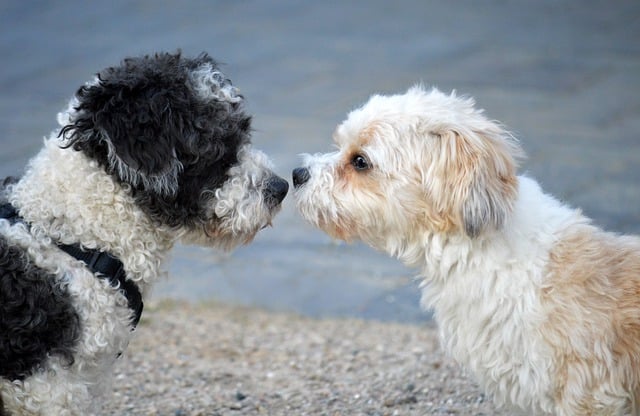Training and Behavior
How to get one dog used to another – 5 tips for a smooth adaptation
admin • 01 Jun 2023

When thinking about having a second dog, it is common to have questions like: “ Will they fight? “, “ Will the older dog be jealous? “, “ Will the older dog be sad? “. In view of this great responsibility that is to think about both pets, we will teach you how to accustom one dog to another.
See below for a complete step-by-step on how to get one dog used to another and 5 tips to help you adapt.
How to get one dog used to another: step by step
It is very important that the whole adaptation process is smooth, without forcing proximity to the animals or any other aspect of this type. The interaction between the animals must occur spontaneously, respecting the limits of each one. To reach this result, follow the step by step:
On the first day let the dogs see each other, but not have physical contact. The ideal is to do this through a glass door or window.
On the second day, dogs must have physical contact; however, it is important to maintain a safety barrier between the two animals, such as a transport box or gate.
On the third day, you will be able to remove this barrier and present the animals more closely. Ideally, you hold the older dog on a leash and have someone else approach the newcomer on a leash as well. They must smell each other so they can get used to each other.
On the fourth day, they must interact without barriers or guides but must be supervised by the tutors.
In the first few weeks, tutors must supervise both dogs so that there is no problem with socialization.
5 tips for getting one dog used to another
Put the following tips into practice to adapt the two animals:
Give the older dog a lot of affection: some animals are more jealous than others, just like children and adults. Jealousy is nothing more than a lack of the animal along with the insecurity created by having a new dog in the home. Therefore, affection is fundamental for the adaptation of the two animals. Pet the older dog especially when he is with the intruder. Over time, the older dog will associate that there is plenty of love for both pets.
Prepare the environment during adaptation: no noise, movement of people, or situations that take the attention of the animals. The adaptation environment must be calm, without the noise of people talking, loud music or any other factor that disturbs the contact of the pets.
Observe at all times: during adaptation, it is important to observe the behavior of the two dogs. The older one may growl and grind his teeth at this stage. If this happens, double your attention so that no attack occurs on the younger animal. In the case of the new dog, notice if he is afraid and if he is comfortable with the environment, among other aspects.
Play with animals: jokes are great ways to bring pets closer together. Playing they can become great friends, as long as nothing is forced. Let them play spontaneously, using balls and other toys.
Have separate objects for each pet: do not mix the objects of the pets, such as feeder, water pot, bed or house, toys, or leash, among others. Each must have its own objects. This way, the older dog will be less jealous of the younger dog and will avoid fights that could be motivated by jealousy.
What to do in case of fights?
Not all dogs are sociable, so it's common for them to fight at first. If this happens, carefully separate the dogs so you don't hurt yourself. At this moment, it is common that you want to scream, fight or punish the animals, however, you must control yourself and not do this in any way.
Outside noise is the best way to distract dogs in situations like this. Scolds, punishments, and screams will only increase the conflict between the animals, and may even get in the way of their relationship. So, always have a can of pebbles nearby to make a lot of noise if they show aggressive behavior.